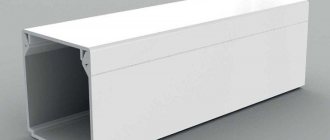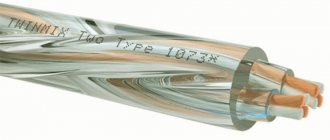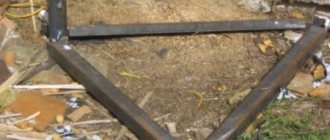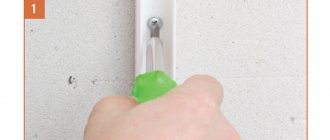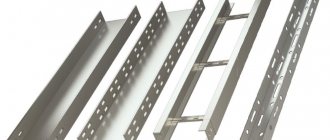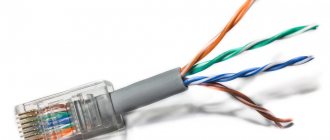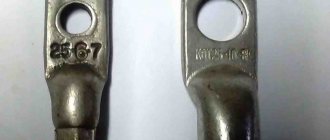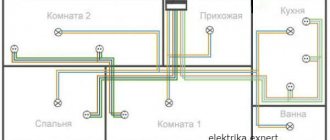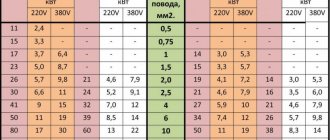Often the concepts cable and wire are used as synonyms, and only specialists knowledgeable in electricity clearly understand that these products are different. Each of them has different technical characteristics, scope of application and design. In some cases, it is possible to use only one of them. To understand the difference between a cable and a wire, it is necessary to consider both products from the point of view of their structure and purpose.
What is a cable?
A cable is a product that contains 1 or more insulated conductors. They can be covered with armor protection if the scope of application involves the possibility of mechanical damage.
According to the areas of use, cables can be:
- By force. They are used for transmission and distribution of electricity through lighting and power plants via cable lines. They may have aluminum or copper cores with braiding made of polyethylene, paper, PVC and rubber. Equipped with protective shells.
- Controls. Used to power equipment with low voltage and create control lines. The main material for manufacturing cores with a cross section of 0.75-10 mm² is copper and aluminum.
- Managers. Designed for automatic systems. Made from copper with a plastic shell. Equipped with a protective screen against damage and electromagnetic interference.
- For transmitting high-frequency (long-distance) and low-frequency (local) communication signals.
- Radio frequency. Thanks to them, communication between radio devices is carried out. The product consists of a central copper core and an outer conductor. The insulating layer is made of PVC or polyethylene.
Alphanumeric designations
GOST specifies regulations for marking the external insulation of cable lines, thanks to which cords, cables and wires can be distinguished from each other. If there are no markings on the braid or they are not sufficient for maintenance and safety, then special tags with additional data are attached to the route.
According to the rules and recommendations prescribed in GOST, a wire is a product consisting of one or more cores, which are protected with insulation along their entire length. The cores can be produced without insulation. A cable is defined as several conductors insulated separately from each other, placed under a single sealed sheath made of metal or polymer materials. A cord consists of two or more flexible conductors that are connected together by twisting or braiding. The cores are fixed along their entire length, and the braid is made from non-metallic materials.
All cables are divided into several groups:
- power;
- signaling and control;
- installation;
- radio frequency;
- connected.
You can decipher the alphanumeric symbols on the insulation yourself.
The first letter in the abbreviation indicates the material the core is made of. The letter “A” at the beginning indicates that the current-carrying conductor is made of aluminum. The absence of such a letter means that it is made of copper.
The second letter indicates the scope of application of the product. If the second letter in the abbreviation is missing, then such a cable is considered to be power.
The third letter is used to indicate the degree of flexibility of the product. Its absence indicates a single-core wire, the presence of the letter “G” indicates a flexible multi-core wire.
The fourth letter allows you to designate the material used to make the insulation. Windings are made from different materials, so more specific designations are used for it.
The fifth letter indicates the material used to make the outer shell and the presence or absence of an armored hull.
The sixth letter can be used to indicate the protective cover, the purpose of the layer and the structure as a whole.
Thanks to capital letters, you can indicate certain features of the cable line, the presence of certain properties. After the letter designations there are numbers. The first number indicates the operating voltage (“1” – 1 kV, without a number – 600 V), the second – the number of cores (1-37), the third – cross-sectional area.
What is the difference
For those who do not work with electrical or electronics, the terminology and the difference between the concepts is not fundamental and is not very clear. However, the differences in conductive elements are quite large. These conductors are used in different ways, for example, wires provide the transmission of electricity from one point to another, and cables are used not only for electricity, but also for other types of signals.
The wire
Usually this is a metal core that does not have insulation. But, in addition to bare varieties, there are also isolated ones, when there is a certain shell of dielectric material on top of the core. The core is made of conductive metals. The specific type of metal from which it is made depends on its purpose. The veins are usually made of the following metals:
- nichrome;
- copper;
- aluminum;
- steel.
However, such conductors are not only single-core, but also multi-core - several small-section cores are present in the twist. They are usually used for transmission lines (power lines), they connect poles together and are made of aluminum. Wires with a single or several twisted conductors can be insulated - in rubber or PVC braiding. That is, all wires are divided into 2 categories - insulated and bare. The first category is used for the following:
- Electrical connection of individual circuit elements or boards in electronic devices.
- Providing internal wiring and creating electrical networks inside buildings for any purpose.
- For connecting elements, boards or powering parts inside electrical appliances.
The bare version without insulation is not used for laying inside buildings or connecting electrical circuit elements inside electronic devices or household appliances. This type is only suitable for providing an overhead line. But not a single variety - isolated or bare - can be used to provide a connection between elements underground or underwater, since they are quite weak and are not designed for such mechanical load.
Cable
It is incorrect to call such an element a wire. It is used for laying lines under water or ground; it has a powerful sheath that protects its internal conductors from damage. This is a conductor element that has a multilayer complex structure of external shielding and insulation with one or more conductive cores. In addition to the insulation of each core, the cable has a common protective sheath, which is often sealed. It protects insulated conductors from external influences. There are 4 main types:
- Armored - used for power lines, laid under water, through the air or under water. Rarely used in everyday life.
- Coaxial - used to transmit a signal from an antenna or cable TV station to a TV receiver, also used in video surveillance.
- Twisted pair - used for transmitting signals, connecting electronic equipment of communication systems, video surveillance, alarm systems.
- Fiber optic is a conductor with functions similar to twisted pair, but with greater bandwidth.
Cord
Cord is one of the types of special-purpose wires. This conductor does not have a serious protective sheath, and the maximum current conductivity does not exceed 660 V. The main purpose of such a connecting element is to ensure connection of portable devices with the power grid. This connecting component has a relatively short length and increased flexibility. That is, a cord is a power wire that is connected to an electrical appliance and provides power to it from the network. Depending on the power of the device to which the cord is connected, its insulation may be thicker or thinner, but the flexibility is still increased.
The difference in the concepts of cords, cables, and wires is significant. They differ in structure and purpose; they are used in different conditions. These 3 types of connecting conductors cannot replace each other. Wires are used for power lines and transmission of electricity. Cables are used not only to transport electricity, but also to transmit video and audio signals. And a cord is also a wire, but it has a clearly defined purpose - connecting various portable devices to the mains.
The wire
Strictly speaking, a wire can be called any conductor that conducts electric current and connects two points. However, there can be several cores in one wire, and they can be either with or without insulation. For obvious reasons, bare wires are used mainly where they are not in danger of being accidentally touched by humans or wild animals. Insulated wires are widely used in automotive technology. But at home you most likely use cords and cables, but more on that below.
FAQ
Question No. 1. What wire should I use to replace the old cord on the iron?
SHVVP - with three cores, cross section 1.5 - 2.5 mm2;
Question No. 2. Which cable is better to install a video surveillance system RG6 or RK-75?
It doesn’t really matter, both options have good characteristics. Which cable is more accessible in your conditions and cheaper.
Question No. 3. They say that PUNP is a bad cable, which one should I use for internal wiring in the house?
According to the stated characteristics, it is a very good cable, but in recent years the rating has dropped significantly; there are many fakes or manufacturers are slacking, the cross-section is smaller, the insulation is thinner. Use PVS or PPV.
Question No. 4. Which wire to put on an electric walk-behind tractor?
ShVVP cord, even better KG cable, cross-section depending on power, but not less than 1.5 mm2 and the number of cores depends on the electric motor, single-phase or three-phase.
Cable
In order to understand the difference between a cable and a wire, you need to consider them in detail. We already know what a cable is. For a more detailed study, it’s time to get acquainted with its classification and varieties. First of all, they are divided into application groups:
- power;
- installation;
- communications;
- management;
- radio frequency;
- optical.
Power ones are designed to transmit electricity. They are laid permanently and used when connecting mobile electrical consumers.
The required elements included in the cable are:
- conductor;
- its isolation;
- shell.
Made from copper and aluminum. Supply voltage – up to 750 kV. They have a long service life (30 years). The best insulation is made from cross-linked polyethylene.
Mounting plates are used for inter-device installation of electrical devices. Supply voltage – up to 500 V. The main material of the current-carrying conductors is copper. They have stable performance at elevated temperatures.
Communication cables are used in signaling and wire communications. For example, a corrugated cocoon-shaped waveguide is used in radio engineering and radar systems. Widely used for intercity, interregional and city communications.
Control cables are used for control and lighting circuits in machine tools and other mechanisms with voltages up to 600 V.
RF and optical media transmit energy and signals at specific radio frequencies or in the optical range.
In addition to groups, these electrical conductors have a number of characteristics by which they are classified. This includes parameters such as insulation, shielding, the number of current-carrying cores and their material from which they are made. There are a number of other signs of cable division. The classification of electrical products is described in detail in the ISO 11801 2002 standard.
Differences by Application
All products that we call wire or cable are used to solve two problems:
- Providing electrical power.
- Transmission of information and control signals.
Electrical power can be low or high voltage. The differences between cables and wires in this segment are determined by the number of cores and their cross-section. Everything that serves to provide power to industrial three-phase electrical installations with a voltage of 380 volts and a current in circuits of at least 40 amperes can rightfully be considered a cable. The rest is wires.
Main differences
If you look at the technical literature, with GOST adopted since Soviet times, you can determine 5 main differences between these electrical conductors:
- number of cores or wires;
- their isolation;
- the cable can be armored;
- place of application;
- difference in service life.
So, the above-mentioned GOST number 15845-80 indicates that the wire includes one or more cores or wires twisted together, and they may have thin insulation or be without it at all.
The cable consists of one or more wires that have a protective sheath and another layer of insulation is wrapped over the entire structure. These additional safety measures protect the cable from various types of damage. The cable can also be armored, which leads to the fourth difference, namely the place of application.
In order to be sure to distinguish a wire from a cable, you should pay attention to the markings, which can be alphabetic or digital.
It is thanks to the additional insulation and armor protection that the cable is suitable for use under water, and this also allows it to be laid underground. It is absolutely impossible to carry out such types of work with wires due to their insufficient protection, which can lead to damage and accidents with varying degrees of danger.
Proof of the above can be found in the rules for electrical installations, which state that electrical wires can only be installed inside electrical distribution devices. Cables or busbars must be installed outside these devices.
The last difference is the lifespan of the cables and wires. As you might guess, thanks to the same additional protection, the cable is more durable and can last up to 30 years. A conductor with a single shell will be suitable for 15 years, no more.
Definition of concepts
A wire, if you follow its definition, contains 1 core with light or no insulation. There may be several such veins. And they also do not have general reinforced insulation.
The main difference between the cable is that it is several cores with additional common insulation. It can be two-, three-, or multi-core.
What is a cord? A cable consisting of several flexible cores, twisted or laid parallel and covered with an insulating sheath is called a cord. Usually used to connect electrical appliances that can move during operation, for example, a vacuum cleaner, iron, hair dryer.
It would seem that everything is simple. 1 core is a wire, more is a cable. But here too there are some peculiarities. The main difference between a cable and a wire is not the number of cores, but the level of insulation. The wire may not be insulated at all. Electricity transmitted by air passes through wires. The cable must have additional insulation, and often more than one. There are armored braids and layers that are impervious to aggressive environments. This allows it to be used for laying in the ground or along the ocean floor. Wherever the conductor will be exposed to the damaging effects of the environment, cable products are used.
Types of cables and wires
Wires are usually divided into two types:
- Stranded.
- Monolith, that is, made of solid wire.
The conditions for using wires depend on their flexibility and resistance. Single-core wires are characterized by hardness and reduced resistance. This is observed due to their design; they are produced both “naked” and in a thin shell. Such solid conductors provide greater performance at high frequencies.
Stranded wire includes a certain number of copper strands woven together. It is more resistant to mechanical damage and is also more flexible, which makes it more durable than monolith wire.
To select a cable or wire suitable for a specific task, you need to know their types and characteristics.
Cables are also divided into monoliths and stranded, while the monolith, as in the case of wire, is more rigid. The flexibility of a multicore cable depends on the number of wires. Based on flexibility, seven classes of cables can be distinguished. 1st is the hardest (mono-core), 7th, respectively, the most flexible.
Rigid cable is usually used when laying in the ground or running through walls, while flexible cable is ideal for moving mechanisms, as well as connecting electrical appliances. As a tip, it can be noted that it is better to use a multi-core cable to connect lighting, since these devices are subject to frequent replacement and a rigid cable can break, unlike a flexible analogue.
What is a cable
A cable is called up to several cores twisted together, which are in a common sheath. The shell can be rubber, plastic, cross-linked polyethylene (XPE) and even metal. It serves to protect the core insulation from external influences (light, moisture, various chemicals), and also protects it from mechanical damage.
Cable meaning
Choosing between cable and wire
When planning construction or renovation, you can decide for yourself what you need to buy - wire or cable. It becomes possible to calculate in advance the required footage of electrical communications. This is necessary primarily in order not to overpay extra money. Knowing the difference between a cable and a wire and installing exactly what needs to be installed in the right place increases the safety of the entire electrical system. This means increased safety, primarily fire safety, of the facility as a whole, be it an apartment or a cottage.
What is the difference between a power cable and a wire?
Technical features of products are individual. Thus, they may depend on the number of cores that make up the cable, as well as on the overall diameter of the cable and the diameter of each individual core.
The cost of one product can vary significantly depending on the above characteristics. Thus, a thick and long cord can cost 5 times more than a thin and short one.
Note! Which cable you need to purchase depends on what equipment you need to connect with it, and how far the device will be removed from electrical networks.
General understanding of insulation resistance
The determining indicator that influences the formation of leakage currents and the formation of single-phase or phase-to-phase short circuits of conductors is the insulation resistance. It shows how insulated the conductor is from the ground and neighboring conductors.
Depending on the brand of cable used, standard resistance values are provided. They may vary based on specific climatic conditions. A megger is used to record the readings. In order to identify weak points, the specified value is periodically monitored. The timing of the inspection is established in accordance with the PUE. Extraordinary insulation tests are carried out in the following cases:
- during commissioning;
- after repair work;
- in case of contact with the protective layer of water or when it overheats.
Measuring insulation resistance
For high-quality formation of a protective coating of current-carrying conductors, it is recommended to use appropriate types of insulating material. In this case, be sure to follow safety regulations. For short-term insulation of conductors, you can use tape.
Types of cables, their classification
First of all, cables contain one or two or more metal cores covered with insulation. They are also covered with armor braiding. Basically, products are classified into 5 categories:
- power;
- control;
- managers;
- communication communications;
- radio engineering.
Power
They deliver electricity over certain distances to distribution substations, power equipment, electrical panels, etc. They consist of aluminum or copper. The surface shell can be made of vinyl, cotton, rubber and metal.
Tests
The conductors are made of copper or aluminum. Used to power low voltage equipment and create control lines. The cross-sectional area of the cores varies from 0.75 to 10 mm2.
Managers
Used to provide control connections for automated systems. The cables are equipped with shielded metal sheaths. The screen protects the lines from unwanted mechanical influence and the influence of external electromagnetic fields.
communications communications
High-frequency communication cables are laid over long distances; low-frequency products are used for local communications.
Radio engineering
They are used to make connections between radio devices, computers and other high-tech devices. An example is television network communication lines. The product contains central monolithic cores covered with polyethylene and shielded braid. The cable is enclosed in a rubber or plastic sheath on top.
A little theory
First of all, let's define what we mean by a power cable.
You can often find an erroneous interpretation of this definition, even among electrical specialists.
Many people understand by power any, for example, a copper power cable for connecting a powerful load, for example, a three-phase electric motor. This is not true.
A power cable is a special kind of electrically conductive system for transmitting industrial frequency electricity from distribution substations, power plants and other types of electric generators to the consumer, which can be a system for providing electric current to final or intermediate consumers.
At first glance it may seem overly confusing and complicated, but in reality everything is not so scary:
An electrically conductive system should be understood as a structure made of conductive cores and, as a rule, multilayer insulation, as well as, in some cases, protection from mechanical stress and damage to the cable.
The electric current supply system is the electrical wiring in the house, power distribution substation, production workshop, etc.
The end consumer is a device that uses electricity and converts it into useful work, for example an electric motor.
Thus, a power cable is a simple transmitter of electricity from the place of its production and distribution to the place where it will be redistributed and used.
Differences between cable and wire
In appearance, electrical cables and wires have a certain similarity, but there are differences between them that are clearly visible to a professional.
Core insulation layer
The main difference between the products under consideration is the presence in the cable of a separate insulating layer for each conductor. While the wire or twist of conductors has a common sheath or does not have it at all. This distinction is described in GOST 15845-80.
Cable and conductor insulation
Thus, if each individual conductor has its own insulation, then the product is called a cable. And when there is no insulation, or a certain number of bare conductor elements (wires) are enclosed in a common insulation, then the product is called a wire.
Product marking
You can also distinguish cable products from ordinary wires by correctly reading the symbols. Each electrical product has its own marking, which is expressed in alphabetic, numerical symbols and color.
The marking of conductors can tell not only what type they belong to, but also about the material of manufacture of the insulating sheath and core, the number and diameter of cores, scope of application and other information.
For example, if a product has the mark AVVGng 3x2.5, then it is deciphered as follows:
- A – aluminum core;
- B – insulating layer of cores made of PVC material (polyvinyl chloride);
- B – the general insulating shell is also made of PVC;
- G – no armor;
- ng – the product does not support combustion;
- 3x2.5 – three cores with a cross-section of 2.5 mm2.
From the decoding it is clear that each core has its own insulation and a common sheath, respectively, this product is a cable. The presence of the symbol “E” in the marking means that the cable has a screen, P – protection made of rubber material, B – armor from combustion and aggressive environments, Ш – the protective sheath of the cable is presented in the form of a hose, and so on.
Examples of marking of various cable products
The marking of wires differs from cables only in the different meaning of some symbols. For example, if a person has a product of the PuGV brand in front of him, then this is an installation wire that has insulation made of PVC material and is characterized by increased flexibility characteristics.
Important! Due to the huge number of various combinations of symbols in the labeling of electrical cable products, it can sometimes be difficult to read. In such cases, it is recommended to resort to the help of special reference books or resources on the Internet.
Terms of Use
The cable has found wider use in special conditions, in contrast to the wire, as it has enhanced protection against various damages. All underground and underwater communications are carried out only by him. They are also laid in fire hazardous facilities, mines, rooms with high corrosive activity and others.
Wires, due to their lower protection, are used mainly inside electrical devices, electrical distributors, and as residential wiring; outside of them, it is recommended to use conductive busbars or cables.
Interesting to know. Cable products have a longer service life and greater throughput (higher current strength and voltage) due to multilayer insulation, the possible presence of screens and layers of armor.
It is extremely important to distinguish cables from wires, since their incorrect use is unsafe. Knowing the concepts described above and the differences between cable and conductor products, the question “is it a wire or a cable” will definitely not arise.
What types of wires and cables are there?
The purchase of the required wire should be based on the power of the devices that will be connected to it. Below are different types of wires most often used for domestic use.
Types of products
Flat
This is a protected cord with single-wire copper cores. The cross-section of the cores is from 1.5 to 6 mm², located in the same plane. External and internal insulation is made of PVC. The flat cable is suitable for use at temperatures of −15-50 °C; during installation, it can be bent in a circle with a radius of at least 10 diameters (since it is flat, the width is measured - the larger side). Designed to transmit current with voltage up to 250 V with a frequency of 50 Hz.
Note! Used primarily for connecting lighting or sockets.
With jumpers
This product is easy to recognize thanks to the characteristic jumpers between the cores, which are made of the same material as their insulation - PVC. The number of cores themselves is 2-3, they are single-wire with a cross-section of 0.75-6 mm². The wire can be used to transmit current with a voltage of 450 V and a frequency of up to 400 Hz.
The insulation does not burn, is resistant to acids and alkalis. After installation, the wire can be used at temperatures of −50-70 °C and in conditions of 100% humidity (characteristic for 35 °C). During installation, it can be bent up to a radius of 10 diameters.
Single-core
Separate aluminum single-core wire. A core with a cross section of 2.5-16 mm² is single-wire, and 25-95 mm² is multi-wire. The PVC insulation material is resistant to chemically aggressive compounds and allows the wire to be used at a humidity of 100% (tests at 35 °C) and a temperature range of −50-70 °C. During installation, it is necessary to observe a bending radius of 10 diameters. There are no special restrictions for use.
In addition to standard power cables designed to transmit electric current, there are a number of additional modifications that are used for other purposes or have separate functions.
Power
The main purpose of power cables is to lay internal or external electrical wiring for powering lighting devices and sockets. One of the most popular and reliable power products of domestic production. Used to transmit electric current with voltage up to 1000 V and frequency 50 Hz. Based on the modification, single- and multi-wire conductors with a cross-section of 1.5-240 mm² are used.
Note! External and internal PVC insulation protects the cores from high humidity up to 98% at a temperature of 40 °C.
Design
The structure of a flat flexible wire is clear from Fig. 1.
Rice. 1. ShVVP cord design
Structurally, the flexible wire consists of copper conductors covered with polyvinyl chloride sheaths. They are located parallel in one plane, covered with individual multi-colored insulation. The flat profile of the cord is given by the shape of the outer shell, consisting of the same polyvinyl chloride, but with other additives.
ShVVP products use stranded copper conductors. The wires in the bundles are twisted to the left to enhance the strength of the core shape. This can be clearly seen in Figure 2.
Rice. 2. Type of copper conductors of the SHVVP wire
Please note: flat wires come in two-core and three-core types. Their PVC insulation has properties that are ideal for patch cords:
- significant resistivity;
- withstands short-term high temperatures generated by insulated conductors in critical situations. Rated operating temperature can reach 70ºC;
- the material of the insulating layer ensures high flexibility of the wire (limit – up to 30,000 bends);
- has a fairly long service life;
- polyvinyl chloride is environmentally safe;
Some parameters and properties of the outer sheath are slightly different from the qualities of the insulating materials that protect the inner cores. More plasticizers and stabilizers are added to their composition, providing aesthetic appeal, resistance to sunlight, and better mechanical strength. These qualities are important for cords used in connecting household appliances and in the manufacture of extension cords.
Deciphering the cable markings: how to distinguish
Due to the vastness of the cable nomenclature, it is worth understanding the markings of the cables most used in construction. Any cable marking consists of letters and numbers.
The meaning of letters and their differences
For example, a very common cable is AVVG (ozh) -0.66 kV 4×35.
4×35 - this cable has 4 cores of 35 mm² each. The number of cores in most groups of cables ranges from 1 to 5, but for control cables, for example, from 4 to 37. Each core has a cross-section. Section range from 1.5 to 800 mm² for low voltage cable.
0.66 kV - voltage. For this cable it is 660 V. Cables are low voltage (0.38-1 kV), medium (6-35 kV) and high voltage (110-500 kV).
- (ozh) - single-core design. This means that the vein is monolithic, seamless. If there is no “ozh” in the brand, then this means by default that the design is stranded (mp) or multi-core (mn).
- G - flexible or unarmored.
- B - vinyl. Shell made of polyvinyl chloride (PVC) plastic. B - vinyl.
- A - aluminum. Aluminum conductor.
All letter markings start from the core. If there is a letter A, then the conductor is aluminum. If the letter A is missing, then the conductor is made of copper. Depending on the group of use, the following symbols may appear in cable markings:
- AVVG-P. Flat, insulated conductors are laid parallel in one plane;
- AVVGz. With filling, filling from a rubber compound;
- AVVGng-LS - ng - non-flammable, PVC plastic compound of reduced flammability, LS - “low smoking” (reduced smoke emission), PVC of reduced fire hazard.
AVBbShv:
- B - armor made of steel tapes;
- Ш - protective hose made of PVC plastic;
- c - vinyl. Insulation made of polyvinyl chloride (PVC) plastic.
ASB2lG, ASKl, TsSB:
- C—lead sheath;
- 2l - two lavsan ribbons;
- G - naked. Protective cover made of two galvanized steel strips;
- K - protective cover made of round galvanized steel wires;
- C - paper insulation impregnated with a non-drip compound.
AKVVGE:
- K - control;
- E - a common screen made of aluminum foil over twisted cores.
APvBbShp:
- P - insulation made of silanol cross-linked polyethylene;
- n - outer shell made of polyethylene.
APvPu2g:
- y - reinforced polyethylene shell;
- 2d - “double sealing”, cross-linked polyethylene insulation with aluminum tape over a sealed screen;
- KG - flexible cable.
Decoding wire markings
But how to decipher the wire markings? Wires, like cables, are marked with letters, after which the number and cross-sectional area of the current-carrying conductors are written down in numbers. The following structure is adopted to designate a wire. The letter P is placed in the center, indicating the wire. The letters P may be preceded by the letter A, indicating that the wire is made of aluminum conductors. If there is no letter A, then the conductors are made of copper. Following the letter P is a letter characterizing the material from which the wire insulation is made:
- R - rubber insulation;
- B - PVC (polyvinyl chloride) insulation;
- P - polyethylene insulation.
If the wire has a braid of cotton yarn coated with varnish, then this is indicated by the letter L, and if the yarn is impregnated with an anti-rot compound, then the letter in the wire brand is omitted. The letter L is placed in last place in the designation of the wire brand.
Note! Wires for electrical installations of the PV brand have digital indices: 1, 2, 3 and 4. These numbers indicate the degree of flexibility of the wires. The higher, the more flexible the wire.
Wires for overhead power lines are deciphered as follows:
- According to the documents, SIP passes as a self-supporting insulated wire. Insulation made of light-stabilized cross-linked polyethylene;
- SIP-1 - with uninsulated neutral;
- SIP-2 - with insulated neutral;
- SIP-4 - with insulated conductors of equal cross-section;
- A - bare wire twisted from aluminum wires;
- AC is a bare wire consisting of a steel core and aluminum wires.
Difference
Cable and wire are visually very similar, but according to technical data sheets, these products go under different names “wire” and “cable”. Looking at the construction estimate, it is clearly visible that the first one costs much less than the second one.
When planning to repair anything electrical-related in your home, you can decide for yourself what to buy. The master will have the opportunity to calculate the required footage in advance. This is important so as not to overpay. By understanding the differences between a cable and a wire and installing exactly what is needed in the right place, the safety of the entire electrical system or electrical installation increases.
Lived
This is a metal wire, the core of any electrical conductor. The core can be solid monolithic or in the form of many thin wires twisted into a bundle. In the first case it is called single-wire, in the second - multi-wire, or flexible. The cross-sectional shape of the core can be flat or sectoral, especially for cables and wires of large diameter. Do not confuse a stranded core and a stranded cable; they are completely different things.
Stranded cable with solid cores
The cores differ according to the type of conductor. At home, those made of aluminum, copper or aluminum-copper are used, although recently aluminum has been replaced by copper. In everyday life you can also find nichrome conductors with increased alloy resistance. The wires heat up during operation, similar to the filament in a light bulb, but not as much. They are used in the manufacture of heated floors.
Stranded copper core
One of the main characteristics of the core is its cross-sectional area. Wire manufacturers always indicate it, but sometimes it becomes necessary to check the cross-sectional area yourself. This can be done using a regular tape measure or caliper. Having measured the diameter of the core, you can easily calculate its area using the formula: S = πr2, where S is the cross-sectional area (circle); number π = 3.141...; r is the radius. The wire cross-section is measured in square millimeters.
Aluminum cable
With a multi-wire conductor, the situation is more complicated, but you can quite accurately determine its cross-sectional area. To do this, you need to wind about 15 turns of the wire stripped of insulation onto a thick nail or screwdriver, squeeze them tightly and measure the length of the spiral with a regular ruler. The diameter of the core will be equal to this length divided by the number of turns. Another way is to measure individual wires and then multiply the resulting number by the number of wires. The cross-section of the core in its diameter is measured by the formula: S = 0.785d2, where d is the diameter of the core.
Cable and wire service life
The cable service life is on average 30 years. The service life of the wire is half that, that is, it rarely exceeds 15 years.
This is due to the fact that the cables have at least double insulation. And some cables are even made with an armored sheath, which also increases their service life.
The cotton yarn braid is an additional layer of cable insulation, but sooner or later it will break too
Sources
- https://lightika.com/elektroprovodka/v-chem-otlichie-kabelya-ot-provoda.html
- https://MasterpoToku.ru/full/cem-otlicaetsa-kabel-ot-provoda.html
- https://Web-electric.ru/osnovnye-otlichiya-provoda-ot-kabelya
- https://rusenergetics.ru/provoda-i-kabeli/chem-otlichaetsya-ot-provoda
- https://amperof.ru/elektromontazh/electroprivodka/chem-otlichaetsya-kabel-provoda.html
- https://tze1.ru/articles/detail/chem-otlichayutsya-kabel-i-provod/
